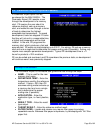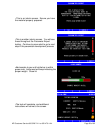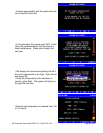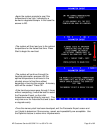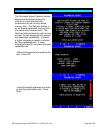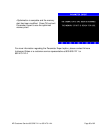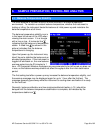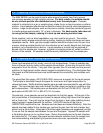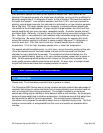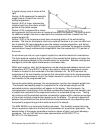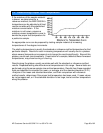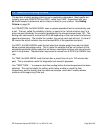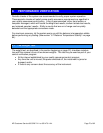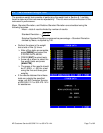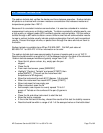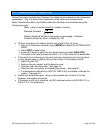
AZI Customer Service 800-528-7411 or 602-470-1414 Page 66 of 92
6.4. Selecting the Optimum Sample Size
Each particular sample will have its own optimum sample size. Best results will be
obtained if the sample consists of a single layer of particles, as long as this is sufficient to
develop a weight loss of 10 milligrams or more. A rule of thumb is "the lower the moisture,
the larger the sample." Low-moisture samples, less than 0.10%, such as chemicals or
plastics, require larger amounts; the instrument is optimized to run low moisture samples
with a 30g load. The larger sample size is necessary to provide sufficient weight-loss
information to the microprocessor. A larger weight change between the initial and final
sample weights will give more accurate, repeatable results. A smaller sample size will
give faster tests. Generally, it is best to use a thin layer that just covers the surface of the
pan. Very light, or very expensive, test materials may necessitate weighing as little as
150 milligrams. Be aware that the standard error will be larger for samples this small,
unless the moisture content is sufficient to cause a weight change of 10 milligrams or
more for each test. If the first result is too low, increase sample size or raise the
temperature. If it is too high, decrease sample size, or lower the temperature.
The sample should be added evenly, in a thin layer, across the entire surface of the pan.
Once the desired amount has been added, the pan can be removed from the test
chamber to evenly distribute the sample. The sample should be distributed over the
surface by gentle shaking, tapping, or for very viscous samples, spread with a spoon or
knife. Do not spread granular products with a spoon as the particles compress even
under gentle pressure affecting test times and results. An even layer of sample across
the pan will reduce test times and increase precision of results.
7. PERFORMANCE ENHANCEMENT
7.1. Introduction
Please note: The information presented here is general in nature.
The Computrac MAX Series loss-on-drying moisture analysis system takes advantage of
computer technology to reduce test times and increase precision over standard vacuum
oven or convection oven drying procedures. The sample is added to an aluminum
sample pan sitting atop an electronic force balance within a test chamber. As the sample
heats and loses weight due to moisture evaporation, the balance records that weight loss
and transmits the data to the microprocessor. The microprocessor interprets the
information and compares the sample's weight loss to a standard drying curve. The final
moisture concentration is extrapolated from the curve and results are available within
minutes.



